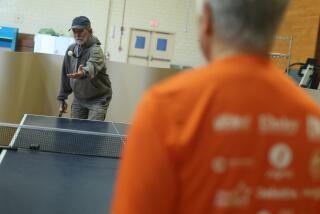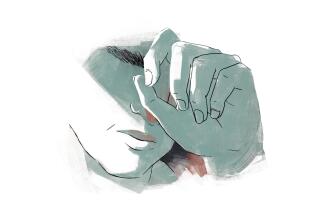Peers’ Role Stressed in Preventing Youth Suicides
- Share via
WASHINGTON — High school students themselves are the best “hidden” resource in helping to prevent youth suicide, but sensitive news media coverage also plays an important role, a panel of experts said Thursday.
“The resource that’s hidden in the school system is the kids,” said Samuel C. Klagsbrun, a psychiatrist and medical director of Four Winds Hospital in Katonah, N.Y. “I’m convinced they know better than any adult” which students are having difficulties coping.
The panel, which included other psychiatrists and officials of the Youth Suicide National Center, cautioned the news media against “romanticizing” suicides, suggesting that reporters should instead focus on what might have been done to prevent them.
The conference was sponsored by the Washington-based center in response to the highly publicized suicides of four teen-agers in Bergenfield, N.J., earlier this month. The youths, suffering from an assortment of personal problems, sat in a car in a closed garage and left the vehicle’s engine running.
Support Groups Suggested
Seymour Perlin, professor of psychiatry and behavioral sciences at George Washington University Medical Center, said that high school students should form support groups with teachers they trust to help identify troubled students and get help for them.
“Whether it’s with the wrestling coach or the math teacher . . . (the groups should) have meetings each fall to remind the community of the problem,” Perlin said. “By developing a bridge of communication between all segments, we will be creating a community of people who might be more alert, more sophisticated (and) whose consciousness is heightened to pick up trouble early.”
Charlotte P. Ross, president of the Youth Suicide National Center, commended reporters who contacted the center for advice on how to cover the recent teen-ager suicides without depicting them in dramatic terms.
Klagsbrun asked the media to downplay the imagery of a suicide--”the camera angle looking at the last place the kid was, the rose on the seat.” Instead, he said, “Show what could have taken place . . . had a friend picked up signals and become intrusive in the troubled youngster’s life.”
Sensational Headlines
Joanne Brokaw-Livesey, director of educational and community services for the CBS Broadcast Group and board member of the Youth Suicide National Center, said that suicides are often given sensational headlines.
“In the case of the four youths in Bergenfield, there has been some attempt to call them now the Bergenfield Four, which is a subtle way of lifting them up as cultural icons,” she said. “Suddenly, they have a fame in death that they never could have achieved in life, and they have achieved that together. And that has some dangerous, possibly insidious ramifications for other youth who are trying to get through their own lives.”
The suicide rate for those between 15 and 24 has more than doubled from 5.2 per 100,000 youths in 1960 to 12.5 in 1984, according to the Center for Health Statistics. The center estimates also that for every successful suicide there are 100 attempts.
More to Read
Sign up for Essential California
The most important California stories and recommendations in your inbox every morning.
You may occasionally receive promotional content from the Los Angeles Times.













